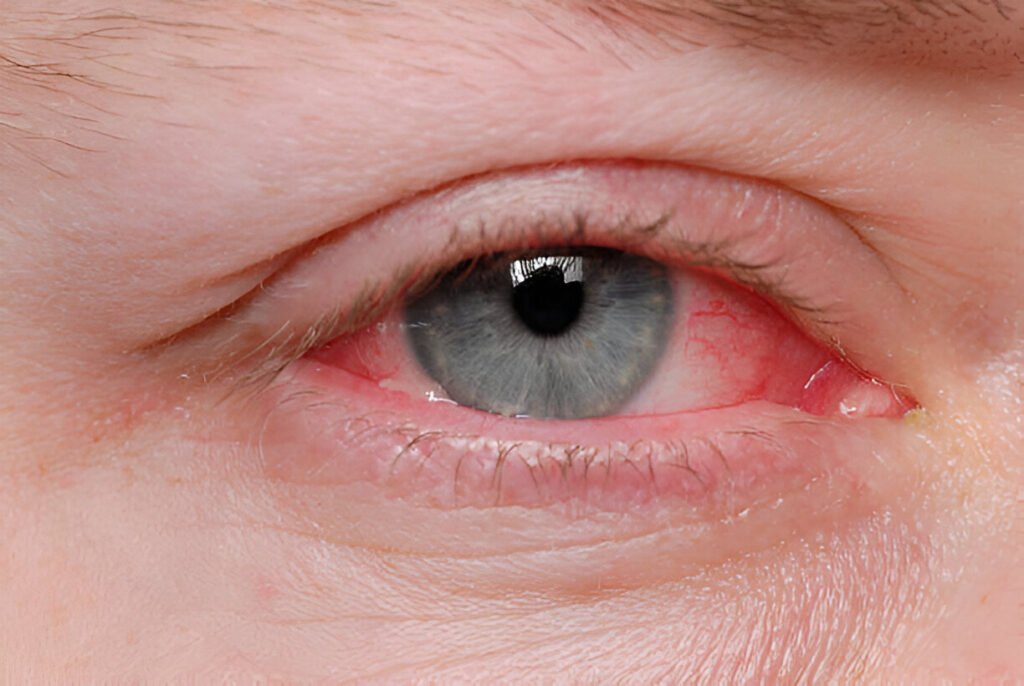Image Credit: Yandex
When symptoms like itchy eyes, swollen eyelids, and watery eyes appear, they often point towards the common eye condition known as pink eye, or conjunctivitis. Yet, what many do not realize is the fine line between this condition and others that exhibit similar signs. The misdiagnosis of these symptoms can lead to unnecessary use of antibiotic eye drops or overlooking more serious underlying conditions. This makes understanding what is commonly misdiagnosed as pink eye not just a matter of accuracy, but of ensuring the right treatment and care.
Tackling the complexity of eye health, this article delves into the conditions often mistaken for conjunctivitis, including uveitis, corneal abrasion, and more severe forms of eye infections. Highlighting the critical distinctions between bacterial conjunctivitis, viral conjunctivitis, and allergic conjunctivitis, as well as exploring less common culprits like iritis and uveitis, it sheds light on why a correct diagnosis is paramount. Whether it’s identifying what is commonly misdiagnosed as pink eye in toddlers, or understanding the nuances of symptoms like eye pain, blurred vision, or irritated eyes, this piece provides expert insights into avoiding diagnostic errors and ensuring effective treatment.
Understanding Pink Eye

What is Pink Eye?
Pink eye, scientifically known as conjunctivitis, occurs when the transparent membrane, the conjunctiva, that lines the eyelid and covers the white part of the eyeball becomes inflamed. This inflammation leads to the enlargement and irritation of the small blood vessels within the conjunctiva, making them more visible and giving the eye a pink or reddish appearance. Pink eye can affect individuals of all ages and is generally not considered a severe health threat, but it is highly contagious and uncomfortable.
Symptoms of Pink Eye
The symptoms of pink eye are distinct and can vary slightly depending on the underlying cause, which may be viral, bacterial, or allergic. Common signs include redness in one or both eyes, a gritty feeling as if sand is in the eye, and itchiness. Additional symptoms often include swelling around the eyes, increased tear production, and photophobia, or sensitivity to light. A notable symptom is the discharge that can form a crust on eyelashes, especially after sleeping, potentially causing the eyelids to stick together upon waking. This discharge can appear white, yellow, or greenish, indicating the type of conjunctivitis.
Common Conditions Mistaken for Pink Eye
Allergic Conjunctivitis
Allergic conjunctivitis arises from exposure to allergens like pollen, pet dander, and dust, causing inflammation of the conjunctiva. Unlike infectious forms, it is not contagious and typically presents with red, itchy eyes, swollen eyelids, and watery or stringy mucus discharge. These symptoms often occur alongside nasal issues such as sneezing or a runny nose. Treatment may include antihistamines and avoiding known allergens.
Dry Eye Syndrome
Dry eye syndrome, characterized by insufficient tear production, can mimic pink eye symptoms like eye redness and irritation. Common triggers include environmental factors such as smoke or prolonged screen use. It is crucial to distinguish this condition as treatments typically involve lubricating eye drops or ointments, which differ significantly from those used for conjunctivitis.
Blepharitis
Blepharitis involves inflammation of the eyelids, leading to symptoms similar to the pink eye such as redness, a gritty sensation, and crusted eyelashes. This condition results from blocked oil glands and is not contagious. Management includes good eyelid hygiene, warm compresses, and occasionally antibiotics to alleviate discomfort.
Keratitis
Keratitis, an inflammation of the cornea, shares symptoms with pink eye including redness, pain, and blurred vision. It may result from infections or wearing contact lenses. Unlike pink eye, keratitis can lead to more severe complications like corneal scarring. Treatment typically involves antimicrobial eye drops and should be managed promptly to prevent vision impairment.
Also Read: Amoxicillin Side Effects in Women: Symptoms and Prevention
Importance of Correct Diagnosis
A correct diagnosis of eye conditions is critical, as symptoms such as redness, swelling, and irritation are common to many eye diseases, not just pink eye. Misdiagnosis can lead to inappropriate treatments that may not only fail to alleviate the problem but potentially exacerbate it. For instance, using antibiotic eye drops for a viral infection is ineffective and can contribute to antibiotic resistance.
Targeted Treatment
Identifying the exact cause of eye symptoms ensures the administration of appropriate treatments. For viral conjunctivitis, antiviral medications might be necessary, especially if caused by the herpes simplex virus. Conversely, bacterial infections require specific antibiotic treatments to prevent worsening of the condition. Allergic conjunctivitis, on the other hand, is treated with antihistamines and mast cell stabilizers rather than antibiotics.
Preventing Complications
Accurate diagnosis is crucial to prevent serious complications that could lead to vision impairment. Conditions like keratitis and iritis, if left untreated or misdiagnosed, can result in severe damage to the eye. Early and correct identification of these conditions allows for timely and effective intervention, potentially saving the patient from significant vision loss. Furthermore, understanding the contagious nature of certain types of conjunctivitis can help in adopting measures to prevent its spread, especially in communal or family settings.
Conclusion
Recognizing the true cause behind symptoms commonly attributed to pink eye is crucial, not only for applying the correct treatment but also for averting unnecessary interventions that might not address the underlying issue. Through exploring the nuances between the symptoms of pink eye and those of conditions like dry eye syndrome, keratitis, and allergic conjunctivitis, we underscore the importance of accurate diagnosis. Identifying these distinctions ensures that individuals receive effective care tailored to their specific condition, thereby enhancing overall eye health and preventing potential complications.
The journey toward precise diagnosis and treatment underscores the broader implications of understanding eye health complexities. As we’ve navigated through the various conditions often mistaken for pink eye, the necessity for professional evaluation becomes apparent to avoid the pitfalls of misdiagnosis. By advocating for thorough and careful assessment of eye symptoms, this article aims to foster greater awareness about eye health, encouraging individuals to seek-appropriate medical advice that can significantly impact the quality of their vision and life.
Also Read: What Supplements Lower Cortisol? Expert Recommendations
FAQs
1. What are some conditions that are often mistaken for pink eye?
Several eye conditions exhibit symptoms similar to those of pink eye, leading to frequent misdiagnoses. Commonly confused conditions include allergies, styes, iritis, keratitis, and blepharitis. These conditions differ in their causes and treatments.
2. What other eye issues could be confused with pink eye symptoms?
Conditions that may present symptoms similar to pink eye include allergies, dry eye syndrome, COVID-19-related pink eye, iritis, keratitis, a stye, or blepharitis. Depending on the underlying cause, emergency eye care might be required for such symptoms.
3. How do pink eye and blepharitis differ?
Blepharitis primarily affects the eyelid, which serves as a protective cover over the eye, while pink eye impacts the conjunctiva, which is the lining on the inside of the eyelid responsible for producing mucus and tears. This key difference distinguishes the two conditions.
4. What distinguishes pink eye from uveitis?
The main difference between conjunctivitis (pink eye) and uveitis lies in the parts of the eye they affect. Pink eye involves the outer layer of the eye, leading to irritation and redness but typically not affecting vision. Uveitis, however, targets the eye’s middle layer and can cause more severe symptoms, including potential vision issues.



Leave a Reply